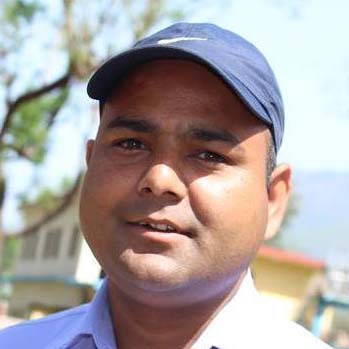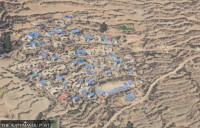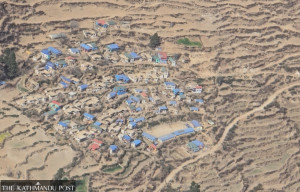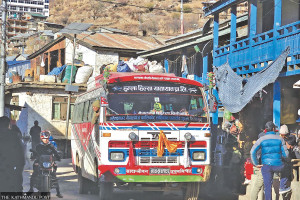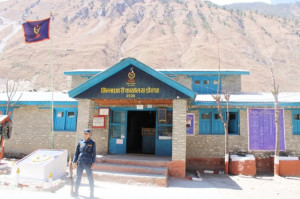Karnali Province
Fatalities and illnesses plague yarsagumba gold rush
Karnali province police report 12 yarsagumba collectors—six from Mugu and six from Dolpa—died this year, with nearly 100 more sick due to altitude sickness.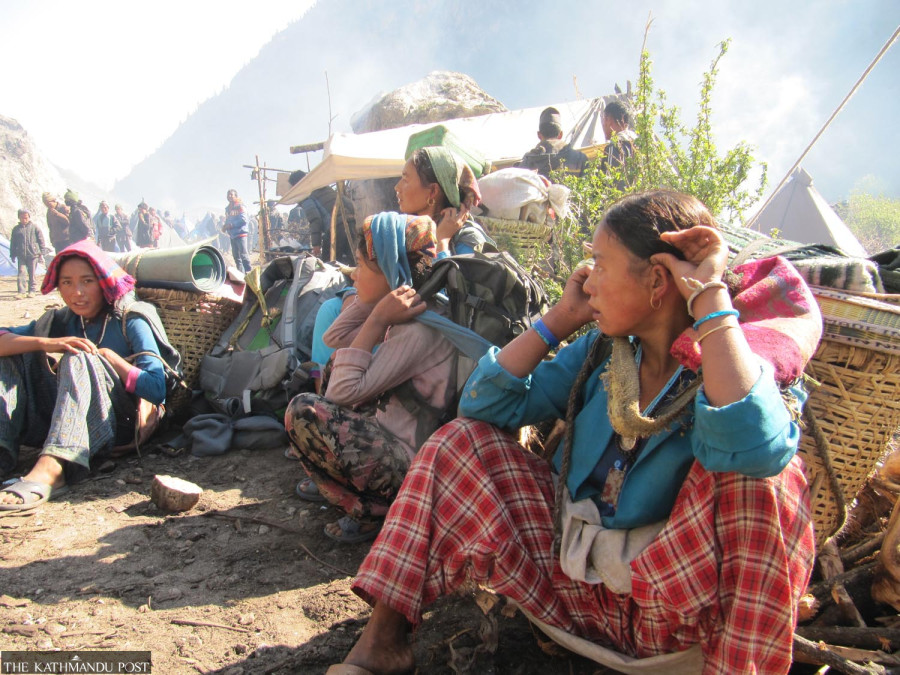
Krishna Prasad Gautam
Jamuna Bista, a 22-year-old woman from Bistagaun in ward 4 of Athbiskot Municipality in Rukum West, set out for Dolpa to collect yarsagumba (cordyceps) in the second week of May. But she died of altitude sickness in Lainidanda in Kaike Rural Municipality in Dolpa on Monday before reaching the highland area.
“We walked for two days to reach Kaike, but my sister died while we were returning home after she fell ill. Neither any of our family members were able to collect yarsa, nor could my sister be saved,” said Saraswati Bista, Jamuna’s younger sister.
According to the Mugu District Police Office, this week four yarsagumba collectors from Mugum Karmarong Rural Municipality, Mugu, died of altitude sickness. Similarly, three male yarsagumba collectors from Chhayanat Rara Municipality also succumbed to altitude sickness.
Deputy Superintendent of Police Birendra Thapa of Mugu District Police Office said that two people suffering from altitude sickness have been brought to the district hospital for further treatment. Similarly, a 26-year-old man from Patarasi Rural Municipality, Jumla, was also taken to the district hospital after falling ill due to altitude sickness and died in the course of treatment last week.
Yarsagumba, whose scientific name is Ophiocordyceps sinensis, is a parasitic fungus that grows within a variety of caterpillars in the Himalayan region. It kills the caterpillar and emerges from the dead body as a thin stem.
According to the Karnali Province Police Office, 12 yarsagumba collectors—six from Mugu and six from Dolpa—have lost their lives this year, while nearly 100 collectors are sick due to altitude sickness. Similarly, 39 yarsagumba collectors have lost their lives in a period of three years.
During the Covid pandemic, there was a ban on the collection of yarsagumba for almost two years, and before that, almost 15 people died every year in the highlands or on the way to the highlands, according to police records. In a period of three years, eight people from Jajarkot, ten from Mugu, nine from Dolpa, six from Rukum West, and six from Jumla have lost their lives while travelling to different highlands to collect yarsagumba.
“In the highlands, most places are steep and treacherous, and in places where the routes are very difficult, one has to walk or climb holding onto bushes and grass. Several people have even lost their lives while traversing these trails,” said Senior Superintendent of Police Bir Bahadur Oli, spokesperson of the provincial police. “Some of the collectors who reach the highlands after a difficult journey also die of altitude sickness, frostbite, being buried under snow, or severe weather conditions,” said Oli.
Sher Bahadur Pariyar, head of the Division Forest Office, Rukum West, said that yarsagumba collectors who reach the collection area are always at risk until they return from the highlands.
“At times, collectors have to climb hills and mountains that are too steep even for monkeys, and from time to time they have to sleep in tents in the snow, where they frequently fall ill. And due to lack of medical care, many of them die. The elderly, children, and women are especially vulnerable,” said Pariyar.
The families of the deceased are traumatised by the deaths of those who go to collect yarsagumba. Last year, a 19-year-old man from ward 1 of Athbiskot Municipality in Rukum West went to Phulbari Highland in Dolpa to collect yarsagumba and died there.
The 19-year-old was the eldest son among his three siblings and they had lost their mother to Covid. His father had been paralysed on his left side for a long time, and he was the breadwinner of the family. After his death, his father and siblings were compelled to work to sustain the family.
Similarly, another 18-year-old man from ward 6 of Barekot Rural Municipality, Jajarkot, also died on his way to the Dolpa highlands last year. His family has not been able to recover from the tragedy, and nobody from the family has gone to collect yarsagumba this year.
Nar Bahadur Nepali, general secretary of the Nepal Red Cross Society, Karnali Province, said that the number of people who lost their lives in search of yarsagumba to earn money is increasing every year.
“Those who go to collect the herb die for several reasons, and the most common ones are getting sick and accidents, but people also die in attacks from robbers while returning home after collection,” said Nepali.
“In most of the places of Karnali, most of the residents can only grow crops in one season only due to cold climate and lack of irrigation facilities. Due to poverty people risk their lives to reach and return from the highlands,” Nepali added.
Deusara Budha of ward 3 of Tatopani Rural Municipality in Jumla said that the villagers are compelled to take high risks to collect yarsabumba in order to manage household expenditures and pay for their children’s education. “The money we earn by collecting yarsa in a month is enough to support a family for the entire year,” said Deusara. She is preparing to go to highlands of the neighbouring Mugu district for the gold rush.
As per the data available at the Ministry of Industry, Tourism, Forest and Environment in the Karnali Province, around 15,000 people have already reached the highlands in Kagmara, Phulbari, Dho, Taksi, Sisol and Nawarpani of Dolpa district, as well as Koiki, Rimar, and Tange, among other areas in Mugu this year. “The number of yarsagumba pickers could be even higher as many people are currently on their way to the highlands. Data collection is underway through the local units,” said Niraj Shrestha, information officer at the ministry. According to him, approximately 33,000 people had gone to the highlands of Mugu and Dolpa last year.
This year, the authorities allowed pickers to go to the highlands in Karnali from mid-May. Learning and teaching have been disrupted in most of the schools in Mugu, Dolpa, Jumla, Rukum West, and Jajarkot among other districts, as the students head for the highlands to collect the precious fungus.
According to sociologist Ganesh Oli, the local people have no alternative but to risk their lives in collecting yarsagumba as they do not have other sources of income. “Yarsa collectors have to endure several challenges in collecting and selling the fungus. Incidents of looting are frequently reported in the highlands and along the way. Moreover, the yarsagumba collectors have to fork out a good amount of money to various forest committees, protected areas and youth clubs in the name of entry fees,” said Oli.
According to Oli, a yarasagumba collector spends around Rs50,000 on his/her way to and from highlands and on logistics during his/her stay in the highlands. “One should earn at least Rs100,000 after spending such a substantial amount. Some yarsagumba pickers even return home in debt, having taken loans in the highlands,” he added.
The yarsagumba harvest has been decreasing in the Karnali highlands in recent years. “Yarsagumba production is decreasing due to overharvesting and adverse weather conditions,” botanist Kiran Sharma. According to him, excessive human activities in the highlands need to be controlled to protect yarsagumba from extinction.
And it is not quite easy for the yarsagumba collectors to sell their precious fungus. Chhiring Kyapne Lama, chairman of Mugam Karmarong Rural Municipality in Mugu, said that pickers could not sell yarsagumba mainly due to the closure of the Nepal-China border. “People did not find a market or get a good price for yarsagumba since Chinese traders did not come to Nepal,” said Lama. According to him, Mugam Karmarong Rural Municipality charges Rs2,000 per person as entry fee from Mugu district residents, while the fee for outsiders is Rs2,500 for yarsagumba collection in the rural municipality.




 16.09°C Kathmandu
16.09°C Kathmandu